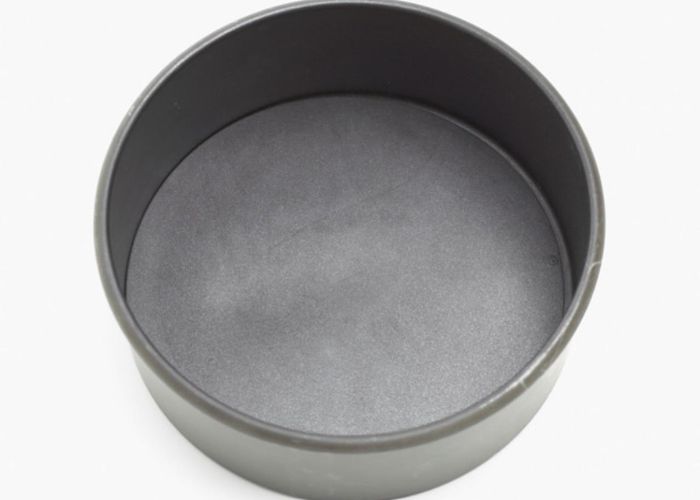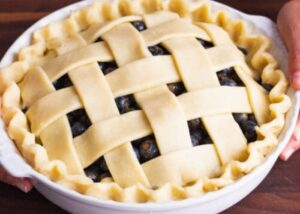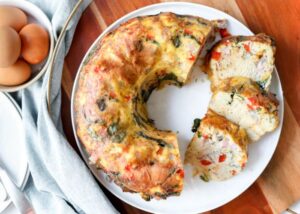The selection of the appropriate baking pan is one of the most important aspects that can either make or break your culinary masterpiece. Baking is both an art and a science. It doesn’t matter if you’re a seasoned baker or just starting out, knowing how to accurately measure the size of a baking pan is crucial to getting the results you want from your recipes.
In this exhaustive aide, we will investigate the different parts of estimating baking dish sizes, expose normal confusions, and give down-to-earth tips to guarantee your prepared merchandise turn out entirely without fail. Let’s read below “What’s the Correct Way to Measure the Size of a Baking Pan?”
The Importance of Accurate Pan Size
Before delving into the specifics of measuring baking pans, it is essential to comprehend the reasons for the importance of accurate sizing. Baking is an exact science, and recipes are painstakingly created to accomplish a sensitive harmony between flavors and surfaces. The cooking time, temperature, and final result of the dish are all affected by the pan’s size, which plays a significant role in this balance.
Using the wrong-sized pan can result in uneven baking, undercooked centers, and overcooked edges, among other problems. The structure and texture of the finished product are also affected by the pan size, which has a direct impact on the thickness of the batter or dough. To keep away from dissatisfaction in the kitchen, excelling at estimating baking container sizes is a crucial expertise for any dough puncher.
What’s the Correct Way to Measure the Size of a Baking Pan?
Baking container arrive in different shapes and sizes, each filling a particular need in the realm of baking. Understanding the normal estimations and aspects of skillet is a critical initial phase in precise dish choice. The dimensions of some common pan sizes are as follows:
- Rectangular Pans:
- 9 x 13 inches
- 8 x 8 inches
- 9 x 9 inches
- 11 x 7 inches
- Round Pans:
- 9-inch diameter
- 8-inch diameter
- 6-inch diameter
- Square Pans:
- 9 x 9 inches
- 8 x 8 inches
- 6 x 6 inches
- Loaf Pans:
- 9 x 5 inches
- 8 x 4 inches
- Tube Pans:
- 10-inch diameter
- Bundt Pans:
- 10-inch diameter
Measuring the Pan
Measurement of the Pan Using a 10-inch Diameter Now that we have established the standard sizes, let’s examine the correct method for measuring a baking pan. Because the outer edges may have flared rims that can skew the accuracy of your measurements, you should take the measurements from the inside. Follow these means for exact estimations:
Length and Width:
Utilize a ruler or estimating tape to quantify from within edge of one side to within edge of the contrary side for both length and width.
Make certain that the measuring instrument is straight and parallel to the pan’s sides.
As this is the standard measurement for the majority of baking recipes, record the measurements in inches.
Depth:
Measure the profundity by setting the ruler or estimating tape upward from within lower part of the container to the top edge.
Assuming the dish has skewed sides, measure the profundity at the absolute bottom.
Record the estimation in inches.
Diameter (for Round Pans):
Passing through the midpoint, measure across the pan’s center.
Guarantee the estimating instrument is opposite to the sides of the container.
Record the estimation in inches.
Common Misconceptions
Notwithstanding the clear course of estimating baking container, a few misguided judgments can prompt mistakes. Let’s dispel some of these widespread myths:
Measuring from Outer Edges:
A few pastry specialists wrongly measure the dish from the external edges, including the edges. Since the recipe specifies the dimensions of the pan’s interior, this may result in inaccurate measurements.
Ignoring Slanted Sides:
Cake pans and other pans with slanted sides can be difficult to measure. Guarantee that you measure the profundity at the absolute bottom to get an exact portrayal of the skillet size.
Confusing Liquid and Dry Measures:
Baking recipes frequently specify volume-specific pan sizes. Because the same-sized pan may hold different volumes of liquid and dry ingredients, it is essential to differentiate between liquid and dry measures.
Assuming All Pans of the Same Size Are Equal:
Container from various producers or materials might have slight varieties in size. Continuously measure your container separately as opposed to expecting they are compatible.
Practical Tips for Baking Success Now that you know how to accurately measure baking pans, let’s look at some practical ways to make sure your baking projects succeed:
Practical Tips for Baking Success
Great baking skillet with exact aspects can have a tremendous effect in the result of your recipes. To ensure consistency in size and performance, make an investment in pans from reputable manufacturers.
Invest in Quality Pans:
On the off chance that you end up without the specific skillet size determined in a recipe, making adjustments is fundamental. Use the guidelines below:
- Decline the baking time for more modest skillet.
- Increment the baking time for bigger dish.
- Watch out for your prepared products and utilize visual and material signs to decide doneness.
Consider the Recipe Type:
The pan sizes required by various recipes may vary. For instance, a shallow container might be reasonable for brownies, while a more profound dish might be great for layered cakes. When selecting a pan, take into account the recipe’s intended outcome.
Use Parchment Paper for Precision:
Line your baking skillet with material paper to work with simple expulsion and guarantee that your heated merchandise keep up with their expected shape. Material paper additionally adds an additional layer of protection, forestalling over-searing.
Adjusting Oven Temperature:
Skillet size can influence the conveyance of intensity in the stove. If you notice uneven browning in your baked goods, you should adjust the oven temperature or rotate the pan halfway through the baking time.
Conclusion
Estimating the size of a baking container might appear to be a straightforward errand, however, it is an urgent move toward the excursion toward consummating your baking abilities. Your recipes will come out exactly as you intended, with the right balance of flavors, textures, and appearance, if you use accurate pan measurements.
By figuring out the normal misinterpretations, following exact estimation procedures, and carrying out down-to-earth tips, you can explore the universe of baking dish with certainty. Therefore, armed with the knowledge of the appropriate pan measurement, the next time you embark on a baking adventure, let your creativity soar and your baked creations delight the senses. I hope you like reading “What’s the Correct Way to Measure the Size of a Baking Pan?”



